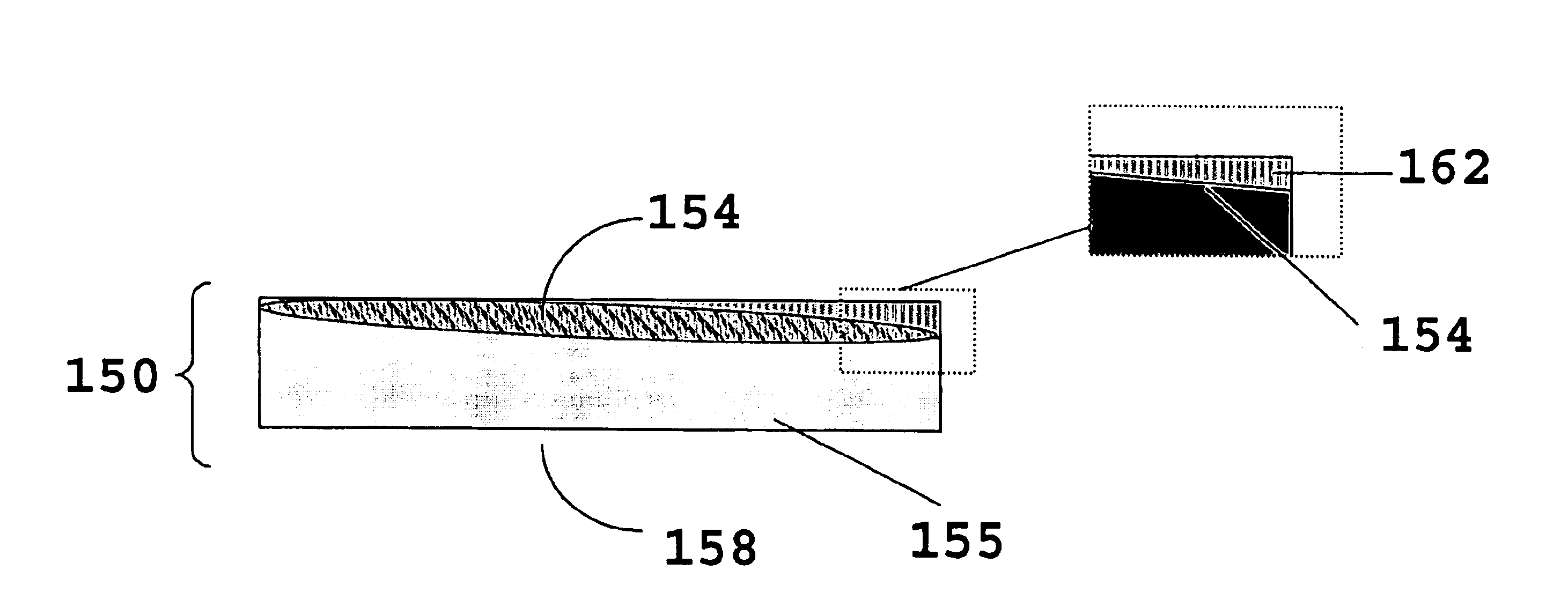Wafer scale production of optical elements
a technology of optical elements and scales, applied in the field of wafer scale production of optical elements, can solve the problems of high production cost of such etalons, inability to achieve desired properties, and inability to meet the requirements of production, so as to achieve precise optical performance characteristics, low production cost, and good production flexibility
- Summary
- Abstract
- Description
- Claims
- Application Information
AI Technical Summary
Benefits of technology
Problems solved by technology
Method used
Image
Examples
Embodiment Construction
[0040]It will be recognized from the above, that the novel optical element wafers disclosed here can be formed in innumerable different configurations and sizes. The precise size and configuration of the optical element wafers, including the dimensions of the wafers, the choice of materials, design of the Fabry-Perot thin films, cavity spacing and the like will depend in large part on the particular application and use environment for which it is intended and its desired optical properties and performance characteristics. For convenience in this more detailed description of certain preferred embodiments, the diced components, either coupons or individual components, of the optical element wafers will generally be of a type suitable for use in optical elements of a fiber optic telecommunication system. It will be within the ability of those skilled in the art, however, given the benefit of this disclosure, to select suitable materials and designs, as well as manufacturing techniques,...
PUM
| Property | Measurement | Unit |
|---|---|---|
| diameter | aaaaa | aaaaa |
| thickness | aaaaa | aaaaa |
| thickness | aaaaa | aaaaa |
Abstract
Description
Claims
Application Information
 Login to View More
Login to View More - R&D
- Intellectual Property
- Life Sciences
- Materials
- Tech Scout
- Unparalleled Data Quality
- Higher Quality Content
- 60% Fewer Hallucinations
Browse by: Latest US Patents, China's latest patents, Technical Efficacy Thesaurus, Application Domain, Technology Topic, Popular Technical Reports.
© 2025 PatSnap. All rights reserved.Legal|Privacy policy|Modern Slavery Act Transparency Statement|Sitemap|About US| Contact US: help@patsnap.com



